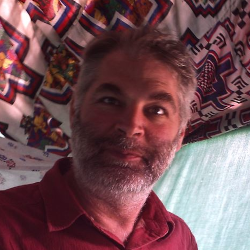Americans are remarkably uninformed about Ethiopia except through the distorted lens of foreign aid. Whatever preconceptions you may have about Ethiopia, forget them. Ethiopia is a modern country with good roads, English-speaking people and environmental beauty. Small, green farms tended by conscientious people line the roadsides. The infrastructure is good and the public places are clean and free of litter. Ethiopia is one of the success stories in Africa.
Unlike the rest of Africa, there are many white people in Ethiopia, especially aid workers, and backpackers, and Ethiopians like Americans. However, unless psychologically prepared, your initial exposure to the culture might be surprising. Expect to tip everyone for everything, repeatedly. Don’t expect casual help, information, or even directions without making the equivalent of a $1 tip. Also, there are a lot of entrepreneurs in Ethiopia and they practice their budding careers with a vengeance. You cannot walk down the street without dozens of solicitations.
Normally I am immune to the plies of street-hawkers and con-men but somehow the sale-at-all-cost atmosphere sucked me in and I found myself speaking to smooth-talking chiseler who could get me a tour into the famous Simien Mountains “cheap.” My wife, Gwynne, and I love to hike, so we were susceptible to the promises of “No problem,” said in the same oily voice heard all over the world. Actually, besides an outrageously good hike, we also experienced the coarsest tag-team extortion I have ever heard of!
Early in the morning, in Gondar, we waited for over an hour to be picked up at our hotel’s lobby - a harbinger of things to come. When the driver of the minivan finally arrived, he spoke no English or pretended he didn’t, and would answer none of our questions. Africa is kind of like that all over, so we shrugged and sat back in the broken down seats. We were distracted from our concerns by a 3 hour drive though beautiful valleys, elegant peaks, and winding roads, but just before we were to get to Debark, the entry point of the park, our driver stopped and demanded more money to continue – in English. I would not pay (I’m stubborn like that) even though he threatened to leave us. Eventually, after waiting it out for 45 minutes or so, he got back into the van and we continued. At the park headquarters we were forced to pay $70 for a guide named Mazo, and a “tracker,” a one-eyed man who carried an ancient, probably nonworking rifle. Mazo barely spoke English, the Tracker none at all.
The mountains themselves certainly survived any scrutiny of under-delivery with the 14,000 foot mountain, Ras Dashen, in the distance, standing-on-the-edge trails, friendly baboons, and rare exotic wildlife and plants. We hiked along ridgetops with majestic valleys stretching out to both sides, and they often lead to finger promontories extending out over 1000 foot drops. Some of the pathways were only a foot wide, dropping off into sheer cliff faces on either side. The indigenous Amhara people still herd their cattle, sheep, and goats in the park, which is relatively clean and free of litter by African standards. Often children would follow us with handmade goods they hawked incessantly. Gwynne eventually succumbed so we ended up with three goat-hair hats “for the kids,” (which we mailed home).
We started at the Buyit Ras campsite, spent the first night in Geech, and the second in Chenek before again meeting up with our transportation. I was crestfallen to see the same minivan and driver. He was in a huge hurry to leave. In fact, he grabbed our gear and hustled us into the van against my protestations to get some pictures. I would have physically resisted but Gwynne didn’t want a scene so we allowed ourselves to be herded back onto the decrepit vehicle. We drove like a bat-out-of-hell around narrow, hairpin curves – sliding across the seats, hanging over fear-inducing ledges. I wondered what the emergency was? At one point we stopped because the guide was sick and got out of the van. He walked over a rise. As soon as he was out of sight we drove away without him. I whispered to my bladder-challenged wife, “Do not get out of this vehicle for any reason until we’re back in Gondar.”
Soon it became clear what the rush was all about… We were going to be a public bus! The van stopped for people waiting along the side of the road, they gave the driver money and got in. Gwynne and I looked at each other? We stopped numerous more times until people were standing, crushed in the aisle and Gwynne was sitting on my lap, our gear on her lap, head touching the roof. The van was packed like this until we got back to Gondar. The driver wanted a tip, I wouldn’t give him one. He got angry, I walked away.
That evening at our hotel, someone knocked on the door. Who could that be, we wondered, no one knew where we were staying? Gwynne looked out the window - it was the guy who had originally sold us the trip, obviously a shill who had no other connection than to take our money, He wanted his “tip.” I told him in no uncertain terms that he was getting no tip from me.
One more little memory of our experience remains: when we returned home from Africa, and with great relief again opened the door into our home, the first thing I said was, “What is that smell?”
“Goat-hair,” replied my daughter.
Simien Mountains
-
Martin Hash

- Posts: 18718
- Joined: Wed Jan 20, 2010 2:02 pm
Simien Mountains
You do not have the required permissions to view the files attached to this post.
Shamedia, Shamdemic, Shamucation, Shamlection, Shamconomy & Shamate Change
